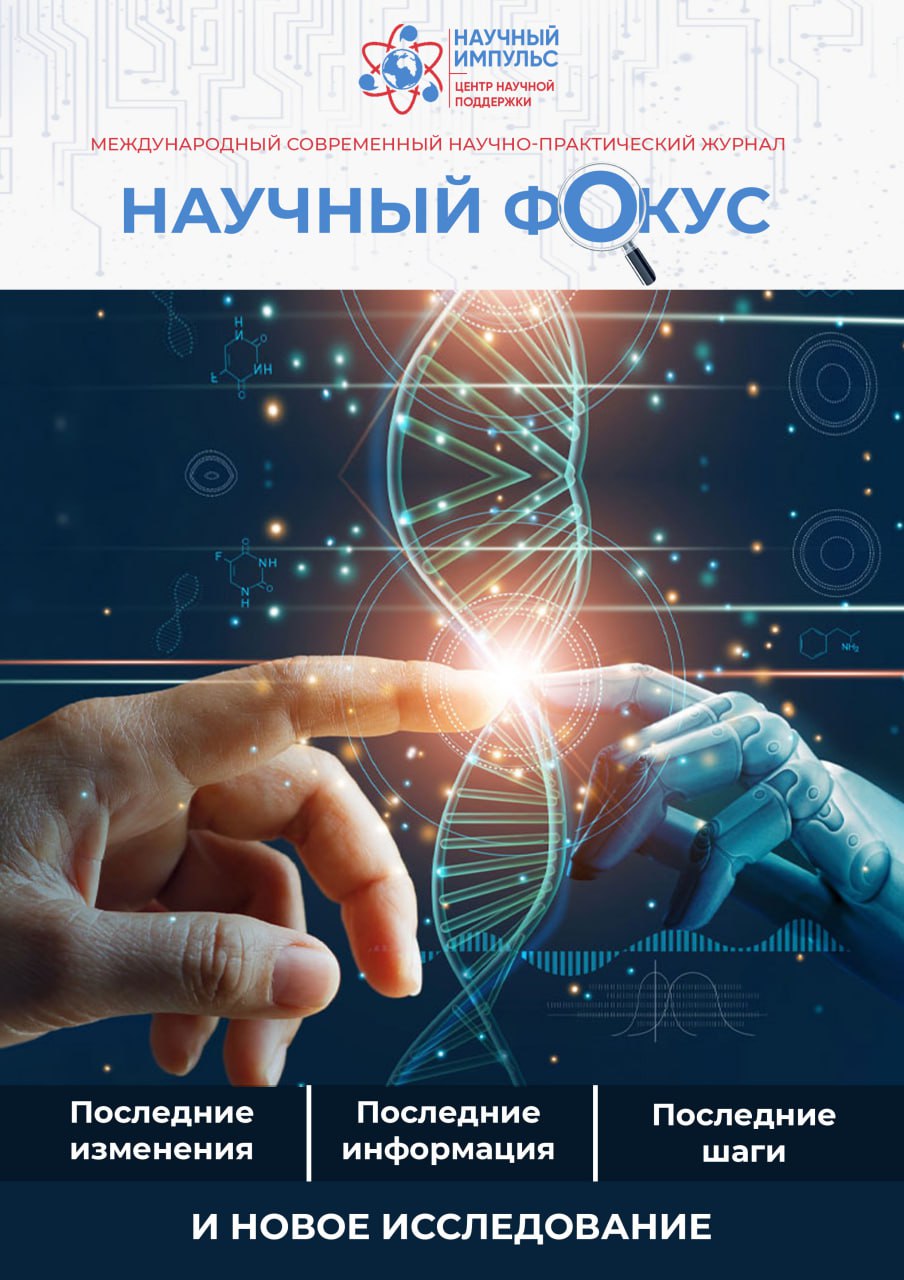APPLYING MODERN EDUCATIONAL TECHNOLOGIES IN EFL EDUCATION
Ключевые слова:
English as a Foreign Language education, educational technology, primary education, secondary education, specialized schools, modern educational technologies, video conferencing, online discussion boards, language learning websites, apps, virtual reality technology, online quizzes, intelligent tutoring systems, augmented reality technology.Аннотация
Modern educational technologies are becoming increasingly popular in English as a Foreign Language (EFL) education, with benefits such as increased engagement and improved language proficiency. This paper discussed the current status of educational technologies in primary, secondary, and specialized school EFL education. The review of current literature revealed that online tools such as video conferencing and online discussion boards can be used in primary education to make learning more interactive. In secondary education, virtual reality and online quizzes can be used to further develop language proficiency. In specialized schools, intelligent tutoring systems and augmented reality can be used to create personalized and engaging language learning experiences.
Библиографические ссылки
Akhmadaliyeva, D. R., & Igamberdieva, S. A. Methodology of Developing Media Competence In The Process of Teaching English to Students of Technical Higher Educational Institutions. Pindus Journal of Culture, Literature, and ELT.
Abunowara, A. M. (2016). Using Technology in EFL/ESL Classroom. International Journal of Humanities and Cultural Studies, 1, 7-23.
Ahmadi, D., & Reza, M. (2018). The Use of Technology in English Language Learning: A Literature Review. International Journal of Research in English Education, 3, 115-125.
https://doi.org/10.29252/ijree.3.2.115
Ahmed, K., & Nasser, O. (2015). Incorporating iPad Technology: Creating More Effective Language Classrooms. TESOL Journal, 6, 751-765.
https://doi.org/10.1002/tesj.192
Bax, S. (2012). How Does Technology Become Fully Effective in Language Education? The Social and Psychological Dimensions of Educational Normalization. In Keynote Address of the Jaltcall 2012 Conference. Nishinomiya: Konan Cube, Konan University.
Blachowicz, C. L., Bates, A., Berne, J., Bridgman, T., Chaney, J., & Perney, J. (2009). Technology and At-Risk Young Readers and Their Classrooms. Reading Psychology, 30, 387-411.
https://doi.org/10.1080/02702710902733576
Boudjadar, T. (2015). ICT in the Writing Classroom: The Pros and the Cons. International Journal of Applied Linguistics and English Literature, 4, 8-13.
https://doi.org/10.7575/aiac.ijalel.v.4n.1p.8
Cakici, D. (2016). The Use of ICT in Teaching English as a Foreign Language. Participatory Educational Research, 4, 73-77.
Canning-Wilson, C., & Wallace, J. (2000). Practical Aspects of Using Video in the Foreign Language Classroom. The Internet TESL Journal, 6, 36.
Gerrard, L. (2012). Writing in Multiple Media. In I. L. Clark (Ed.), Concepts in Composition: Theory and Practice in the Teaching of Writing (2nd ed.). New York: Routledge.
Grabe, W., & Stoller, F. L. (2002). Teaching and Researching Reading. New York: Pearson Education.
https://doi.org/10.4324/9781315833743
Harmer, J. (2001). The Practice of English Language Teaching (3rd ed.). Harlow: Longman.
Hashim, H. (2018). Application of Technology in the Digital Era Education. International Journal of Research in Counseling and Education, 2, 1-5.
https://doi.org/10.24036/002za0002
Herrington, J., & Kervin, L. (2007). Authentic Learning Supported by Technology: Ten Suggestions and Cases of Integration in Classrooms. Educational Media International, 44, 219-236.
https://doi.org/10.1080/09523980701491666
Herrington, J., Reeves, T. C., & Oliver, R. (2007). Immersive Learning Technologies: Realism and Online Authentic Learning. Journal of Computing in Higher Education, 19, 80-99.
https://doi.org/10.1007/BF03033421
Hicks, M., Reid, I., & George, R. (2001). Enhancing On-Line Teaching: Designing Responsive Learning Environments. International Journal for Academic Development, 6, 143-151.
https://doi.org/10.1080/713769258
Jayanthi, N. S., & Kumar, R. V. (2016). Use of ICT in English Language Teaching and Learning. Journal of English Language Teaching and Learning, 3, 34-38.
Khan, A. (2015). Using Films in the ESL Classroom to Improve Communication Skills of Non-Native Learners. ELT Voices, 5, 46-52.
Lombardi, M. M. (2007). Authentic Learning for the 21st Century: An Overview. EDUCAUSE Learning Initiative, 1, 1-12.
Mansor, N. (2016). Enhancing Communication via Social Media in ESL Classroom. In 6th International Conference on Language, Education, and Innovation.
Mansor, N., & Rahim, N. A. (2017). Instagram in ESL Classroom. Man in India, 97, 107-114.
Morat, B. N., Shaari, A., & Abidin, M. J. Z. (2016). Facilitating ESL Learning Using Youtube: Learners’ Motivational Experiences (pp. 23, 137). Banda Aceh: Association of Malaysian Researchers and Social Services Faculty of Teacher Training and Education, Universitas Syiah Kuala, Darussalam.
Ng, C. F., & Ng, P. K. (2015). A Review of Intrinsic and Extrinsic Motivations of ESL Learners. International Journal of Languages, Literature and Linguistics, 1, 98-105.
https://doi.org/10.7763/IJLLL.2015.V1.20
Pilgrim, J., Bledsoe, C., & Reily, S. (2012). New Technologies in the Classroom. Delta Kappa Gamma Bulletin, 78, 16-22.
Rafiq, M. K. R., & Hashim, H. (2018). Augmented Reality Game (ARG), 21st Century Skills and ESL Classroom. Journal of Educational and Learning Studies, 1, 29-34.
Rosicka, Z., & Hosková-Mayerova, S. (2014). Motivation to Study and Work with Talented Students. Procedia—Social and Behavioral Sciences, 114, 234-238.
https://doi.org/10.1016/j.sbspro.2013.12.691
Roy, A. (2019). Technology in Teaching and Learning. International Journal of Innovation Education and Research, 7, 414-422.
https://doi.org/10.31686/ijier.Vol7.Iss4.1433
Saine, P. (2012). iPods, iPads, and the SMARTBoard: Transforming Literacy Instruction and Student Learning. New England Reading Association Journal, 47, 74.
Shyamlee, S. D., & Phil, M. (2012). Use of Technology in English Language Teaching and Learning: An Analysis. In International Conference on Language, Medias and Culture (Vol. 33, pp. 150-156).
Simin, S., & Heidari, A. (2013). Computer-Based Assessment: Pros and Cons. Elixir International Journal, 55, 12732-12734.
Yunus, M. M. (2018). Innovation in Education and Language Learning in 21st Century. Journal of Sustainable Development Education and Research, 2, 33-34.
https://doi.org/10.17509/jsder.v2i1.12355
Yunus, M. M., Hashim, H., Embi, M. A., & Lubis, M. A. (2010). The Utilization of ICT in the Teaching and Learning of English: “Tell Me More”. Procedia—Social and Behavioral Sciences, 9, 685-691.
https://doi.org/10.1016/j.sbspro.2010.12.218
Yunus, M. M., Nordin, N., Salehi, H., Sun, C. H., & Embi, M. A. (2013). Pros and Cons of Using IICT in Teaching ESL Reading and Writing. International Education Studies, 6, 119-130.

